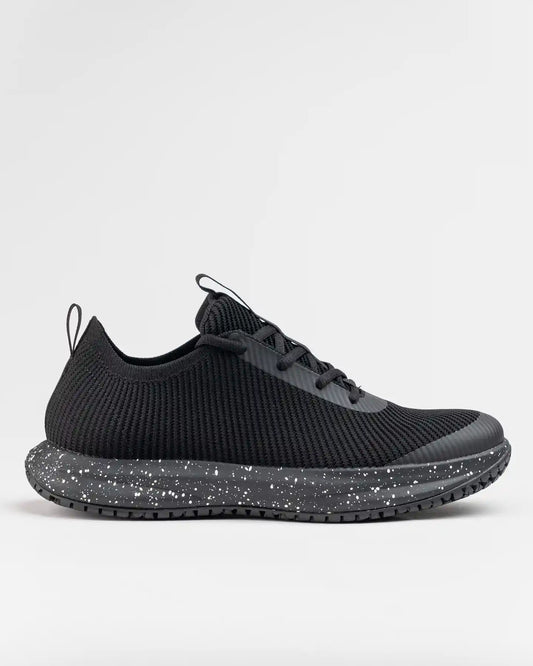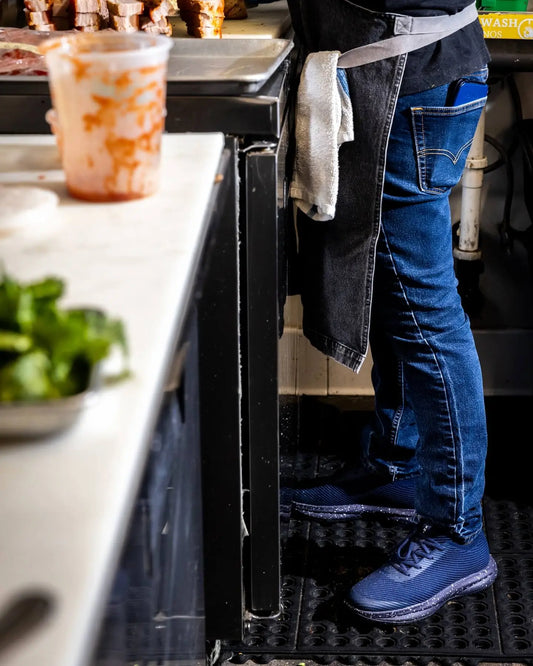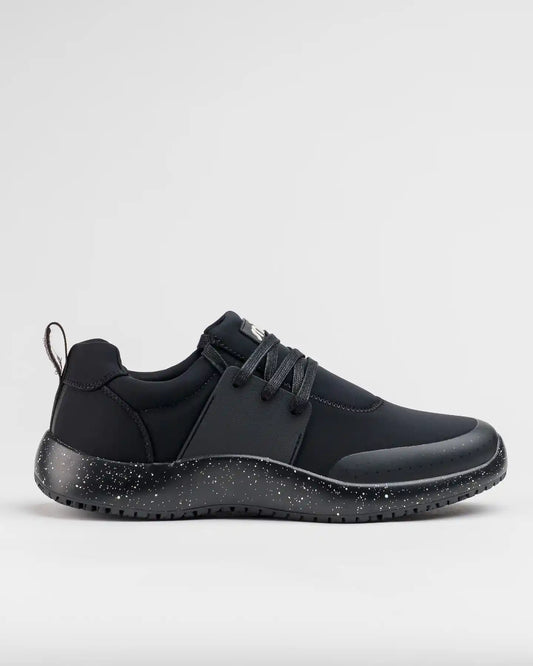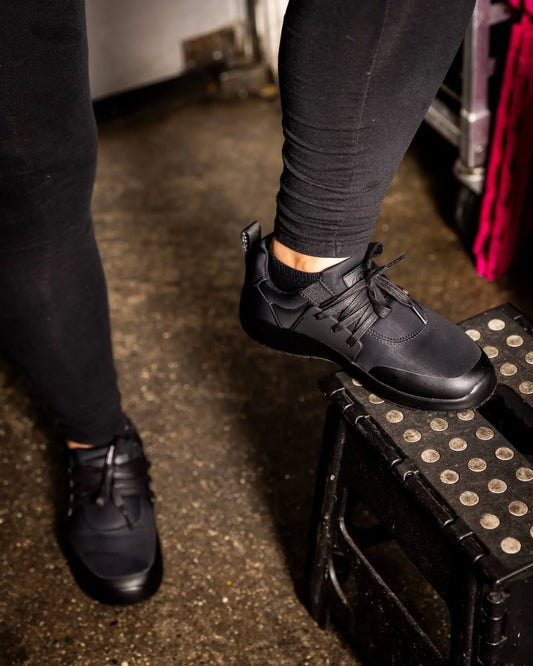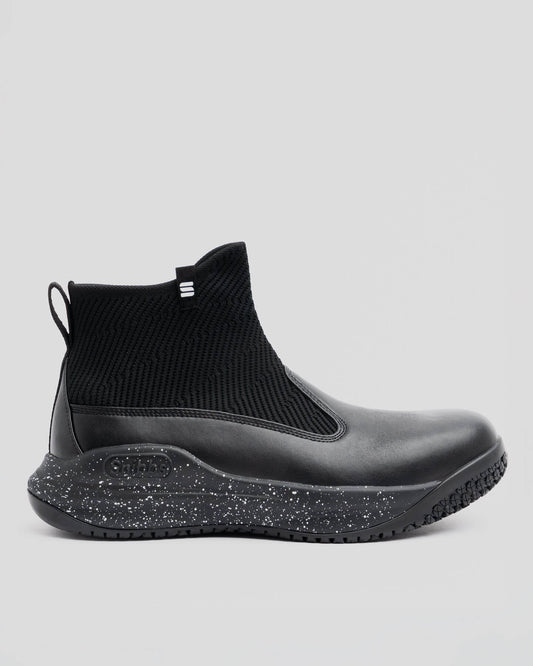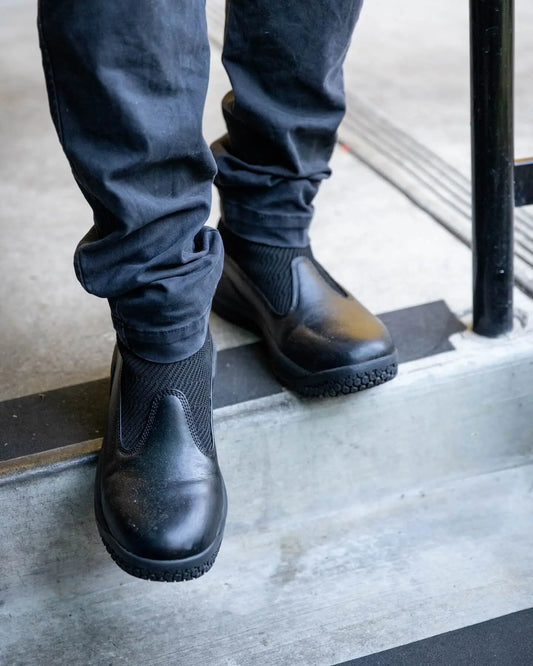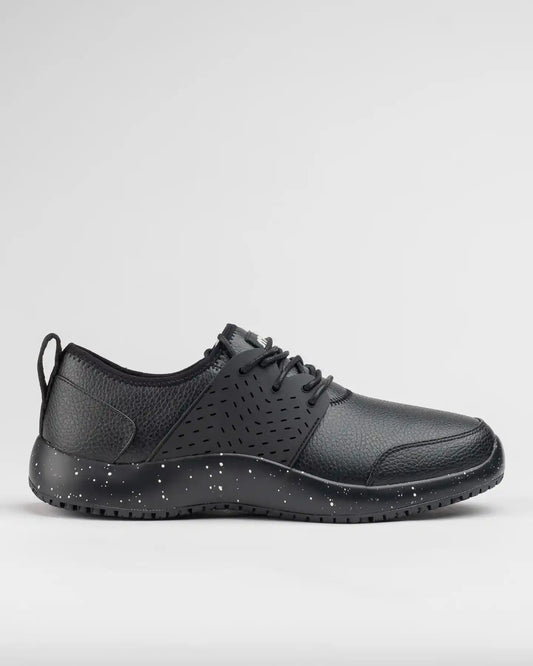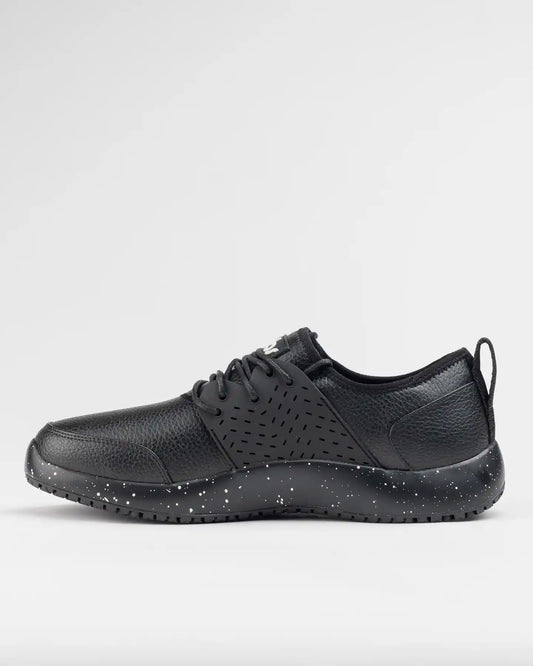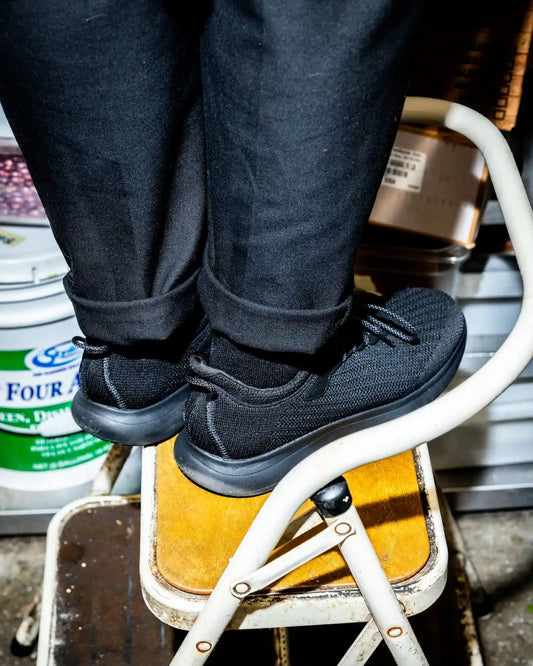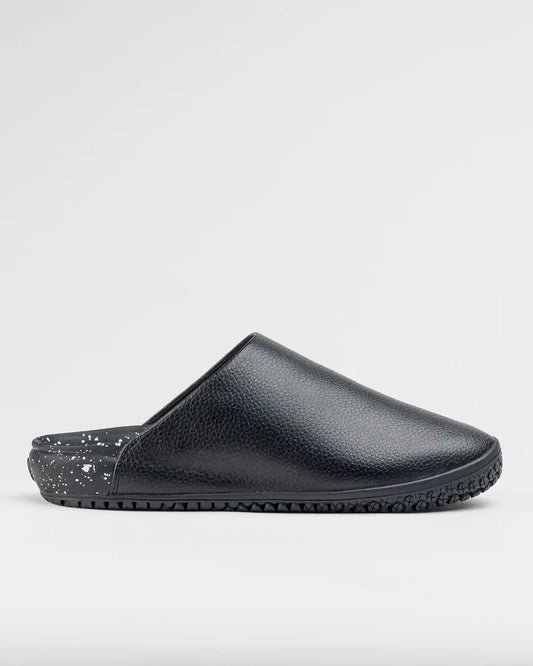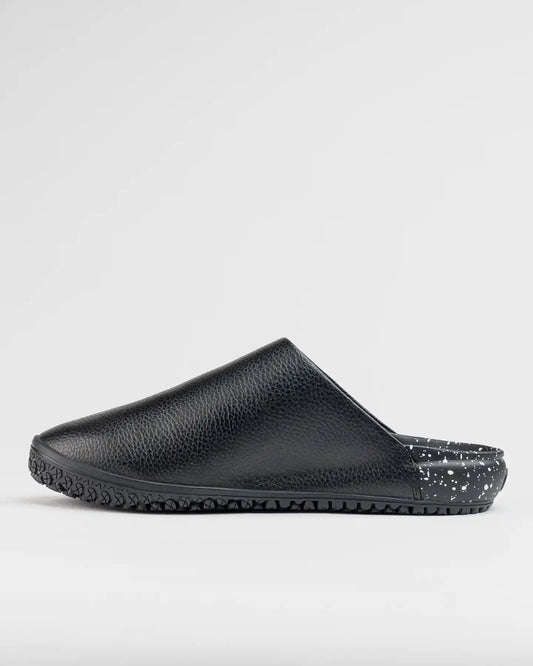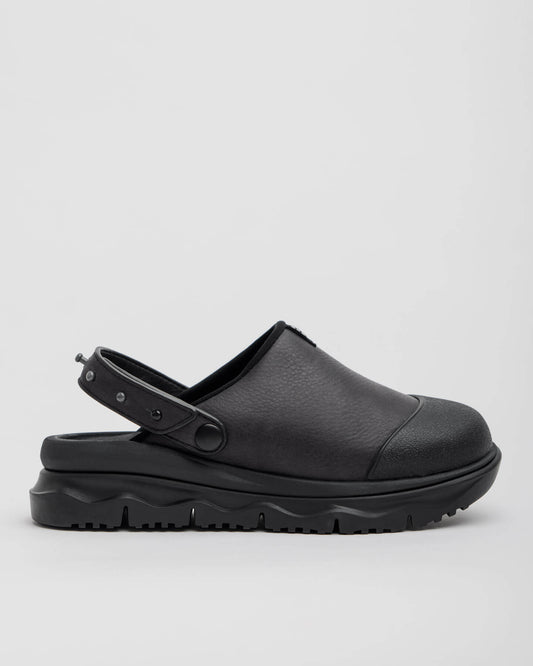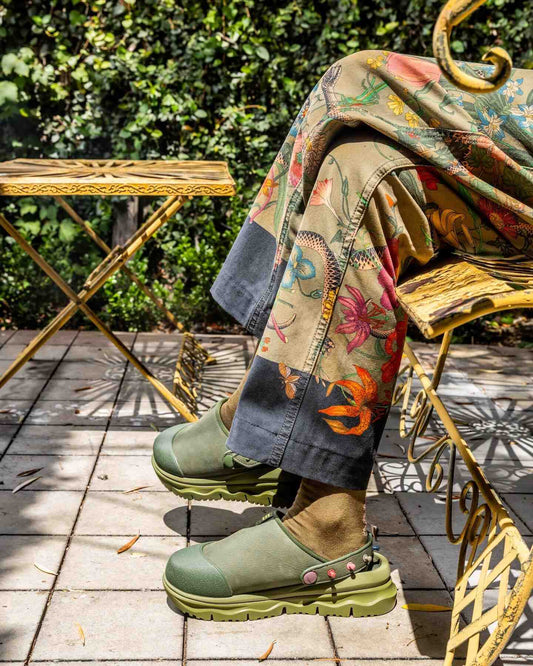Dress Code for Food Service Employees
Alex Kinejara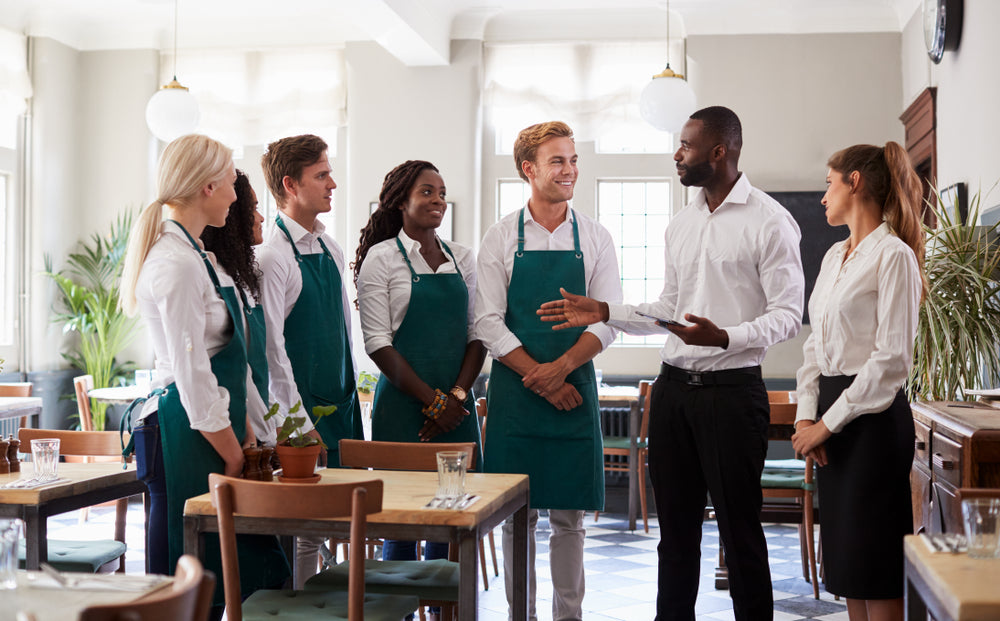
Whether you’re entering the food service industry for the first time or you’re an old hand looking to revamp your work wardrobe, it’s perfectly normal to wonder what to wear to your restaurant job.
Following dress codes is an important responsibility for a food service employee. What you wear sends more than a message about the restaurant; it also plays an essential part in food safety and workplace hygiene. But not just any old clothing will do for restaurant employees. You need clean clothes that are durable enough to stand up to night after night of hard work while being comfortable enough that you can stand up night after night, too.
So what does a good restaurant employee dress code actually look like? And can you pull together an appropriate outfit from what’s already in your closet? From front-of-house staff to line cooks, here’s the ultimate dress code for food service employees to keep you safe, comfortable, and maybe even stylish.
What Are the Benefits of a Dress Code?
A standardized dress code policy helps your team work better as a team. (There’s a reason you don’t see football players running around in different jerseys out on the field.) In addition to creating a sense of community, dress codes will also help your restaurant with:
- Food safety – No customer wants to chomp into their delicately crafted sirloin steak and find a stranger’s hair. Dress codes keep food clean and uncontaminated.
- Personal safety – Wearing high heels in the back of the kitchen—a place famous for sloshing liquids—is simply not a great idea. Dress codes keep everybody safe and minimize potential accidents.
- Recognizable brand image – When customers come into your restaurant, they should immediately know who works there. Dress codes will ensure that they do. Plus, they give you a chance to communicate something about your restaurant’s image and values.
- Focus on work — You don’t need to worry about what to wear or how you look when the uniform has already been established. Stick to one easy outfit, and your mind will be able to focus on serving the best experience to your customers.
What Are the Three Types of Dress Codes for the Workplace?
Each restaurant is as unique as the plates it serves. Your restaurant may require that everybody wears the same uniform, or you may have opportunities to express your own unique style. Not only do dress codes vary from restaurant to restaurant, but different positions at one restaurant may follow different dress codes.
And just like an office space sets a specific dress code policy for employees, restaurants do, as well. You’ll find that your restaurant likely follows one of three styles of workwear:
If you have any questions, ask your direct supervisor for more information. They should be able to tell you specific policies on:
- Hairstyle
- Nails
- Shoes
- Uniforms
- Jewelry
- Tattoos
- Hygiene
What Does a Food Service Manager Wear?
Because a food service manager has more responsibilities than, say, a line cook, their dress code should reflect that. If you’re a manager at a restaurant, you’ll want to wear something that communicates your position. A slightly elevated uniform will:
- Make you identifiable to customers
- Signal your position
- Communicate respect for the restaurant and your colleagues
If you’ve been given carte blanche as a food service manager, consider these few pointers when establishing your work uniform:
- What is the dress code at your restaurant? Formal, business casual, or casual? Your attire should reflect that. A suit may be on the menu at a formal restaurant, while separates might be good enough at a business-casual restaurant.
- Do uniformed employees wear a specific color? You may want to wear a small detail with the same color to match them.
- How often do you hop back in the kitchen and are non slip shoes required in your restaurant? You’ll want to make sure your best restaurant work shoes are slip-resistant.
How Should I Dress to Work in a Kitchen?
A dress code for restaurant employees who work as the kitchen staff may be much more strict than for those who work front of house. The reason is quite simple: Food safety.
Your manager isn’t just trying to be difficult when they focus on what you’re wearing to work. Dress codes are the sorts of nitpicky but essential details that are rigorously maintained and inspected by departments of food safety. If you work in the kitchen, your workwear needs are different from those of your colleagues who work in different departments. You’ll need to think about:
- Comfort – Can you wear it for a double shift without pain? This applies to everything from your footwear to the tightness of your trouser waistband. Don’t wear anything that you can’t move easily in or that you can’t wear for hours at a time.
- Durability – You’re working in a kitchen. You’re probably going to spill some sauces. The griddle could spit oil at you. Whatever you’re wearing is probably going to get stained. (So don’t wear your favorite one-of-a-kind vintage t-shirt to the kitchen.) If you’re wearing whites, can they hold up to constant bleaching? If your kitchen allows it, black may be a better option for hiding anything you accidentally spill on yourself.
- Maintenance – If the restaurant provides a set uniform and laundry service, you won’t have to consider laundry. But if you’re responsible for washing and drying your work clothes, be sure to pick materials that can hold up to regular, rigorous cleaning.
- Safety – Depending on your position in the kitchen, you may often be working with open flames. You definitely won’t want to be wearing anything with loose or billowing sleeves.
And you’ll want to leave your bling at home. According to the FDA Food Code, food employees “may not wear jewelry including medical information jewelry on their arms and hands.” The only type of jewelry allowed when you’re preparing food is a plain ring, such as a wedding band.1
Other essentials for working in a kitchen may include:
- Hair nets
- Slip-resistant footwear
- Aprons
- Gloves
- Chef’s coat
What Is the Dress Code For a Server?
Of all the positions at a restaurant, a server’s dress code is perhaps the most tightly defined and maintained. You are, after all, the main point of contact for all the diners coming through the door. How servers dress defines the restaurant’s:
- Values
- Vision
- Vibe
Your uniform will likely be very clearly defined, particularly if you’re working at a more formal restaurant. Need some server tips on what to wear, consider these factors:
- Ease of movement — You’ll be weaving between tables all night. Wear something that’s easy to move in.
- Sleeve length – You don’t want your sleeves accidentally going in someone’s soup. If your shirt sleeves go all the way down to your wrist, make sure that the cuffs are tight enough that they won’t accidentally drag across food.
- Easy to clean – On a particularly busy night, there’s a chance that you could spill something on yourself. Keep a spare set of clean clothes or spot treatment in your pocket for just such occasions.
- Breathability – You may not be working over an open flame all night, but if you’re a hard-working server, you’ll probably be breaking a sweat during the dinner rush. Wear something that won’t show your sweat—bonus points if the fabric of your uniform can wick sweat away from your skin.
- Footwear – You’re likely going to be, quite literally, running around your restaurant. And even if you don’t head deep into the kitchen, there’s still a chance of you slipping on spills. Wear slip-resistant footwear for added security.
- Formal vs. casual – Whatever the feel of your restaurant, make sure that your outfit matches it. If you’re working in fine dining, you may need to show up in a suit. If it’s a casual joint, you can likely get away with jeans and a t-shirt.
Dress in Comfort With Snibbs
At the end of a double, you won’t care what you wore so much as how you feel after hours of bussing tables, seating customers, or plating meals. But luckily, with Snibbs, you don’t have to choose between style and comfort.
Our perfect restaurant shoes are specifically engineered for comfort when you’re working hard—without looking like they’re sneakers you’re only wearing because they’re comfortable. Developed by industry veterans, Snibbs sneakers were designed to make life easier at the restaurant. From slip-resistant soles to adjustable sides that expand with your foot, you’ll end your shift as pain-free as when you started it.
Find your perfect pair of slip-resistant work shoes today, then get back to dishing out what you do best. Those customers aren’t going to feed themselves.
Sources:
- U.S. Food & Drug Administration. Food Code 2017. https://www.fda.gov/media/110822/download
- Entrepreneurial Chef. Back to Basics: Attire in the Kitchen. https://entrepreneurialchef.com/attire-in-the-kitchen/

